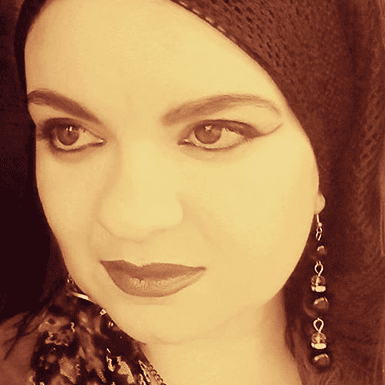Leafing through this book upon receiving it, the discrepancy between the thriving life in Palestine before the Nakba and the Zionist narrative of the barren land was striking. Reading and becoming familiar with the content, Against Erasure: A Photographic Memory of Palestine Before the Nakba (Haymarket Books, 2024), is a vivid testimony that shatters all the myths of Zionism and puts to shame the UN’s role in aiding the European colonial ideology to devastate Palestine to the ultimate genocide being experienced now by Palestinians in Gaza.
Mohammed El-Kurd’s foreword impacts immediately with the difference in language. The book is a bilingual English-Arabic edition and El-Kurd notes, “In English, there is a need to riddle the page with facts and figures detailing the essential cruelties of an atrocity that should be – and should have long been – internationally recognised.” In Arabic, he continues, “there is no need for such contextualisation” since the Nakba is ongoing and permeates across generations, geography and exile. Zionism, El-Kurd writes, “invisibilised us” since the early colonial process.
Teresa Aranguren takes the reader on a historical journey of Palestine, showing, in particular, how the barren land myth was countered by several visitors to Palestine in the late 1800s, and how the Rothschilds and the Jewish National Fund altered land ownership in Palestine through the first appropriation of territory. Aranguren notes that the JNF required exclusively Jewish labour on appropriated land and contracts stipulated that land could not be granted to non-Jewish individuals.
REVIEW: Towers of Ivory and Steel: How Israeli Universities Deny Palestinian Freedom
Bichara Khader describes the 1948 Nakba as “a sociocide accompanied by a memoricide”, invoking the former Israeli Minister of Defence, Moshe Dayan’s Haifa address in which he lauded the Judaisation of ethnically cleansed Palestinian towns and villages.
With most of the book dedicated to photographic evidence and memory of life in Palestine before the Nakba, the brief contexts given by several authors frame the images within a timeframe which, as it progresses, draws closer to the Zionist ethnic cleansing of Palestine. The photographs themselves tell several stories of abundance, of a society that embraced agriculture, business, the arts, education and medicine and of the entire fabric being disintegrated by British colonialism and Zionist paramilitaries. From the 1936 revolt, to the early aftermath of the 1948 Nakba, the photographic evidence compiled in the book shifts from abundance to Zionist colonial theft, and the early trappings of forced displacement which brought UNRWA into the picture, as the international community concocted their humanitarian response rather than focus on the legitimate political rights of the colonised.
The photo collections bring the Palestinian right of return to the forefront of political rights, as opposed to an imaginary concept. The cultivation of olive groves in Palestine, the water irrigation systems, Jaffa’s role in the exportation of citrus, religious traditions and celebrations, Jerusalem shopkeepers, the medical profession and specialisations such as Hebron’s School for the Blind, to mention a few, all point towards a land and people that were thriving in their own traditions, cultures and various professions. The land was not barren. On the contrary, the book shows a very vibrant society that was starting to feel the implications of the British Mandate and its colonial rule in Palestine, later replaced by Zionist settler-colonialism.
One particular photo depicts the inauguration of the Palestine Broadcasting Service in March 1936. The caption indicates that the British Mandate would not allow political issues to be broadcast: “a first indication of the future and limitations of radio broadcasting in Mandatory Palestine”.
A photo and anecdote dispelling the notion of a religious conflict in Palestine concerns the Church of the Holy Sepulchre in Jerusalem in the early 1900s. Various Christian denominations, all vying for custody of the keys, ultimately laid the decision to rest by entrusting a Muslim family with the keys to the Sepulchre – a practice that remains presently. Another photo shows female employees of the Haifa Customs Department, including two Jewish women who worked alongside Palestinians and British employees.
REVIEW: Refuge and Resistance: Palestinians and the International Refugee System
And, while Zionists falsely labelled Palestine as not being industrialised, the book shows photos of Palestine’s railway in Jerusalem, dating back to 1898, and the opening of the Jaffa-Jerusalem railway line in 1920.
A considerable portion of the book is dedicated to family and individual portraits of prominent Palestinians. Interspersed within these photos are notable places that played a prominent role in the early Palestinian resistance, such as the Khoury building in Haifa, burned down by the Haganah paramilitaries.
The early Zionist destruction of Palestine is also shown in the book, with photos of Haifa in April 1948, following the Zionist paramilitaries’ attacks on the village, and the demolition of buildings, bringing clearer recollections of the ongoing destruction of Gaza into sharp perspective. Photos of refugees fleeing Jaffa, others displaced from Gaza to Hebron, while many await their impending exile after forced displacement, to Lebanon and Egypt. As the Nakba comes into being, refugee camps dominate the last part of the book, and the first initiatives of UNRWA’s humanitarian aid distribution. While poignantly, the Palestinian people’s commitment to education is portrayed through a photo depicting a pre-school class in the Dikwaneh refugee camp in Lebanon.
Aranguren writes, “The establishment of the Jewish state would not have been possible without ridding the territory of its Arab population.” Palestine was never a barren land, but Zionist intends to make it barren of Palestinians, as evidenced by the current genocide in Gaza. A timely publication, illustrating that there is no excuse not to revisit the past, to connect the trajectories and embark on a reversal of the colonial travesty that stole Palestine from the Palestinians.












